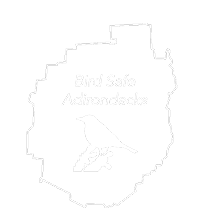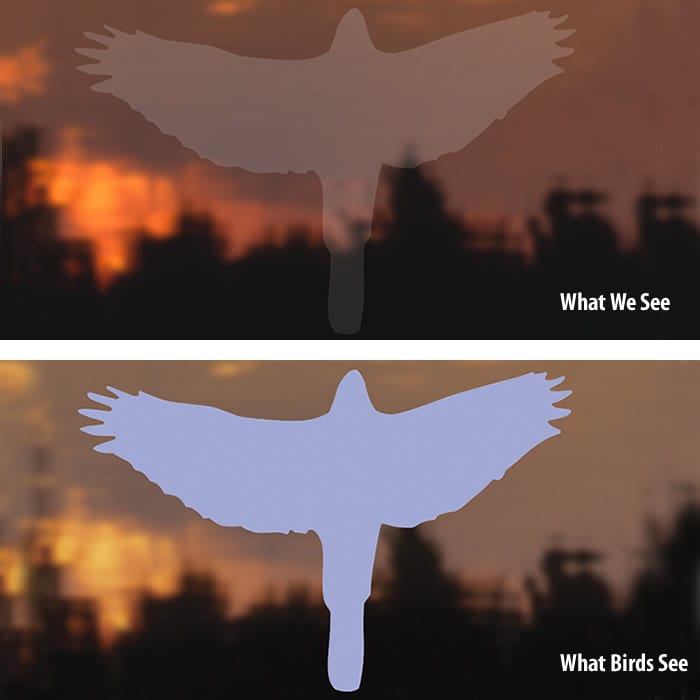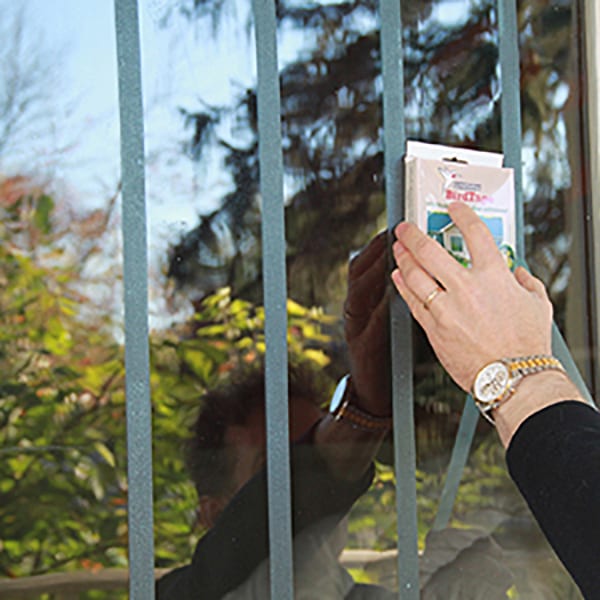
Bird Safe Adirondacks
PURPOSE
The Adirondacks are usually thought to be a safe natural habitat for many types of wildlife, but recent research* conducted at Paul Smith’s College conservatively estimates that 100,000 songbirds die from building collisions within the Adirondacks each year. National research estimates that as many as 1 billion birds die in the U.S. annually from striking buildings.**
The goal of Bird Safe Adirondacks is to protect the lives of birds in the Adirondack region by reducing the number of bird strikes on buildings. Glass windows are the most common cause of death and the primary focus of bird safety measures.
Bird Safe Adirondacks is modeled after national programs, such as “Safe Flight” and “Lights Out” initiatives found in urban areas, launched to reduce bird strikes with city buildings. While we don’t have skyscrapers for birds to contend with in the Adirondacks, we do have many windows! Our hope is to reduce this problem through sharing information on how to prevent bird collisions and how to outfit buildings with window treatments that deter strikes.
*Research was conducted by students in the S-STEM scholarship program. S-STEM scholars were supported by the National Science Foundation, under grant #1154455.
**Bird-building collisions in the United States: Estimates of annual mortality and species vulnerability, Loss et al 2014
WHY DO BIRD COLLISIONS OCCUR?
Some reasons that collisions happen include:• Window are often invisible to birds• When outdoor vegetation is reflected on an exterior window surface, a bird may fly into a window believing that it is flying toward another plant or branch• When indoor vegetation is displayed in windows, birds believe they can fly directly to it and do not see the window barrier• Startled birds sometimes fly erratically into a building
HOW YOU CAN HELP
Have you ever had a bird collide with a window at your home or business? Here are a few simple ways to stop this from happening:
 Window Screens – Install screens, or move existing screens to the exterior of your windows.
Window Screens – Install screens, or move existing screens to the exterior of your windows.
Impact: Screens can reduce the severity of a bird window collision, and eliminate collisions entirely by making the window more visible to birds.
Bird Feeders – Relocate bird feeders to a safe zone, within 1-5 yards of your home or business, or beyond 10 yards away. Feeders located within 5-10 yards of a building pose the greatest danger.
Impact: Birds will fly slower near a building when the feeder is within a short range (1-5 yards), and will be less likely to collide with a building at all if the feeder is far (beyond 10 yards) from the building.
Houseplants – Move indoor houseplants away from windowsills.
Impact: Birds are often attracted to indoor vegetation and fail to see that there is a window in the pathway as they approach. Moving houseplants away from windows can reduce bird collisions.
OTHER WAYS TO PREVENT BIRD COLLISIONS
If repositioning bird feeders, plants, and window screens doesn’t do the trick, there are commercial products available to prevent bird strikes. There are a wide range of options, some that are less expensive and more simple to install than others. Some window screens and films can serve a dual purpose by reducing unwanted summer sun exposure.
Birds view the world differently than people, so adding simple patterns or outlines to a window can be very effective. Static-cling UV decals are often barely detected by the human eye, but look like a solid shape to a bird.
The following products are some examples of products available to purchase, with the goal of preventing bird collisions:
- Window decals or stickers
- Adhesive patterned window film or tape
- Hanging bird screens
- Monofilament “fishing string” curtain
Contact »
Jorie Favreau
Department Chair of Natural Science
Freer Science Building 213C
(518) 327-6911
jfavreau@paulsmiths.edu



